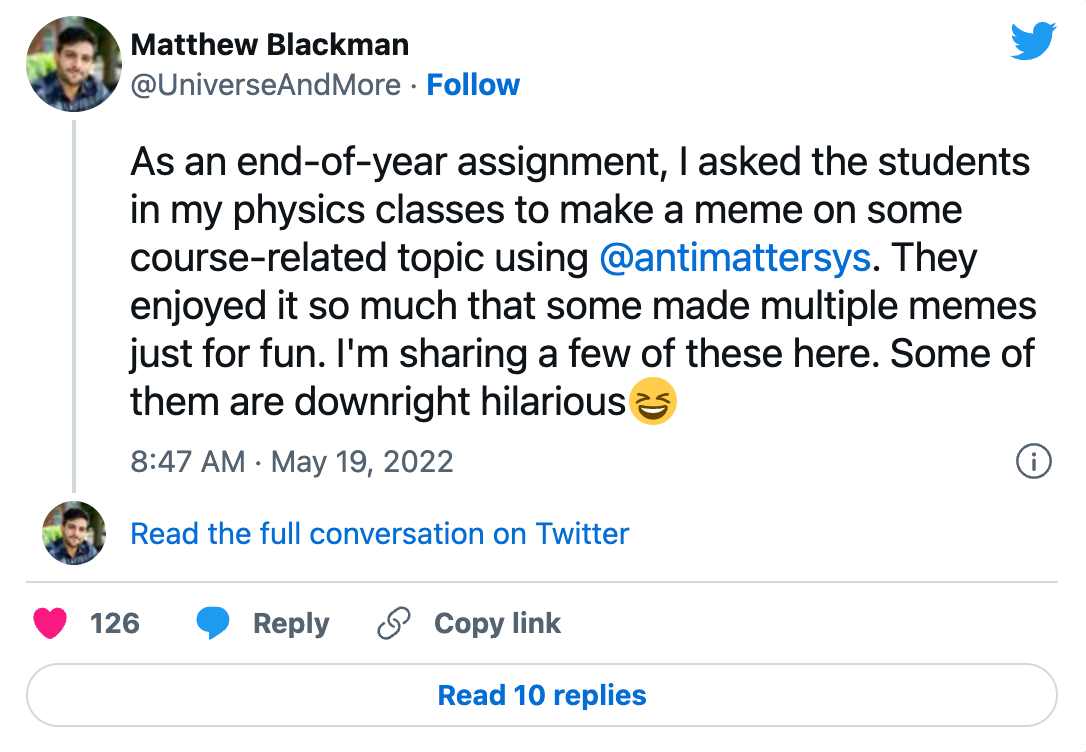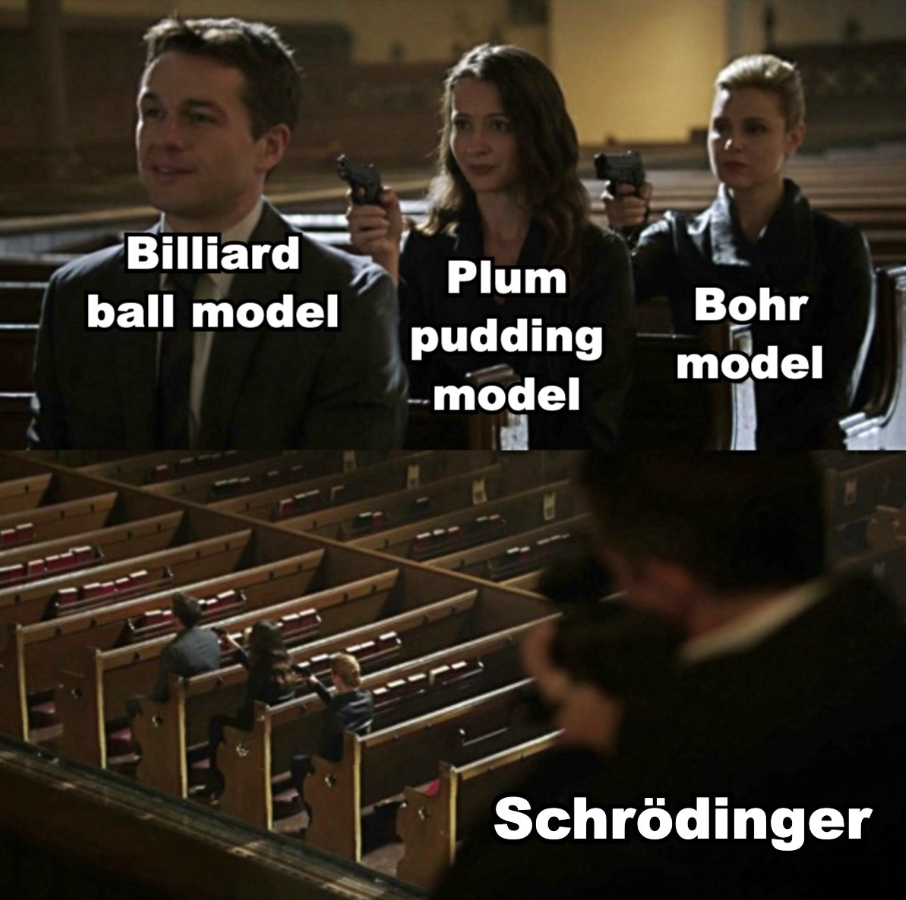How (and how not) to use memes in the classroom
As a high-school teacher of 15 years, I’m always looking for creative and interesting ways to get students to engage with my subject matter. One of those ways is having students create memes at the end of a unit. At first blush, that may seem like a superficial exercise or merely a way to convince the students that I’m the “cool, relatable teacher.” But done the right way, memes are an incredible and motivating way to encourage students to engage more deeply with the subject matter. After all, the more you understand a topic, the better the joke or story you can tell.
There are of course lots of tools to solicit memes from students. I know a number of other teachers who have used Google Classroom to have students submit memes directly and privately to their teacher, though this is something I’d recommend against. Memes are inherently social, puzzle-like stories; in that vein, they’re best shared and debated between students.

When I’m recommending memes as a classroom activity to peers, as well my course at Rutgers on Educational Technology for Science Teachers, here’s what I advise teachers in terms of getting the most out of their students from the activity:
- Structure the activity as a competition with several winners. Optionally, you can offer some type of small reward.
- Advise students that their meme should demonstrate that they understand a particular fact/concept/equation
- Advise students that their memes should require the person who is reading it to think about the subject matter. I explicitly asked them to make the memes “puzzle-like”
- Advise students that if someone does not “get” your meme, there should be some word/phrase that they can look up to learn more.
And here’s the most important thing to advise against:
- Memes should not be about the class but rather should be about the subject matter. This ensures that only high-quality memes are submitted.
The results never failed to impress me in terms of my students’ creativity and acumen—I’d often have students who expressed their understanding of the subject matter better through memes than any other medium. Beyond the memes that the students produced, but also in the conversations they were having. Their interactions were meaningful in terms of class content, exuded positive morale and community, and infused the classroom with cultural relevance.
A few examples:



Meme competitions were often amongst my proudest moments as a teacher (and many others) but they are also sound educational practices. Having a class create and evaluate their own memes is high on Bloom’s taxonomy. Giving students a chance to synthesize their knowledge by connecting it to a familiar format can provide scaffolding and memorable connections. The result is that students are able to relate meme templates that they have used dozens of times with their friends to course content that is still new to them.
Looking back on the lesson, I believe that there were a few strategies that made it so successful. Here are a few things I’ll be keeping in mind when running this lesson again:
- It was pivotal to provide guidelines for my expectations of what is a “good” meme for learning.
- Students found it interesting that a meme can be a “puzzle” for learning, where someone needs to understand the subject in order to be in on the joke.
- When students created surface-level memes (not up to expectations), I expressed enjoyment of the meme but also reiterated the guidelines for the depth of the subject matter being infused into the meme.
- Make sure that students have time to evaluate and discuss each other's memes, both individually and as a class.
- Post the memes for other students/classes/teachers to see. This can mean printing them out for your classroom, sharing them online, or any other way to make your students feel “famous” for their work.
Naturally, I am writing this on the Antimatter blog, and that’s because Antimatter made my meme exercises much easier and more effective than Google Classroom or Google Slides. Here are a few reasons why:
- Antimatter has students submit memes on tiles in a grid; the most upvoted memes (“blessings” in Antimatter’s parlance) get pushed to the center. It’s the perfect blend of individual competition with a collectivist effort to promote the best work.
- My students loved that Antimatter takes memes very seriously. They import meme templates from around the web every day, so my students weren’t stuck with my “boomer” template suggestions.
- The creation tools in Antimatter are like nothing you’ve ever seen in an educational tool. After years of reminding myself that there’s no underestimating young people’s creativity in visual storytelling, I still couldn’t believe how effortlessly my students created very novel memes.
- My students so enjoyed it they went above and beyond the requirements; my 20 students produced 50 memes.

Whether you use Antimatter or an existing tool in your technology suite, I can’t recommend meme creation as a classroom activity strongly enough. It gives your students a chance to express their knowledge in creative ways. Not only will it infuse culture and positive morale into your classroom, but it will also create a space where your students can demonstrate what they've learned while teaching each other in a way only students can do.
